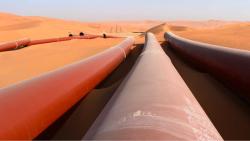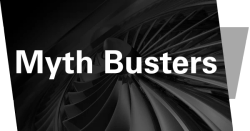
OR WAIT null SECS
© 2024 MJH Life Sciences™ and Turbomachinery Magazine. All rights reserved.
Practical torsional analysis of complex compressor trains
A comprehensive torsional analysis should be carried out for a complex compressor string. Various modes of torsional vibrations should be extracted and analyzed. Complicated combinations of effects in various steady state and transient operating cases should be considered. Complete practical notes and latest achievements on torsional design, train arrangement, component selection, coupling sizing and vibration studies are described.
Train comprising three or more coupled machines (excluding any gear unit) is considered 'Complex Train'. A modern arrangement is two-end motor driven train configuration.
Another example of complex trains is H-type train configuration. In this configuration, four compressor casings are arranged on the two sides of the multiple shaft gear unit. This is an example of modern conventional multi-casing arrangement to avoid long train.
GENERAL NOTE ON TORSIONAL VIBRATION
For any complex train, complete train torsional vibration analysis is required. Excitations of torsional natural frequencies come from many different sources. Excitations are usually categorized into two main types, those function of running speed and those not. If feasible, 10% separations between any possible excitation frequencies and specified operating speed range, from minimum to maximum continuous speed, should be considered. In many trains, usually variable speed trains with gear unit, it is not possible to provide above mentioned 10% separation. For example in a typically complex train variable speed motor driven centrifugal compressor using gear unit, following speed ranges are of concerns: 1,300-1,900 rpm (motor running speed), 2,600-3,800 rpm (two times of motor running speed), 7,000-13,000 rpm (compressor running speed) and 14,000-26,000 rpm (two time compressor running speed). As it can be realized, it is not possible to avoid torsional natural frequencies occur in these ranges.
Damped torsional analysis, stress analysis and fatigue study to show infinite reliable-life are required to demonstrate that there is no adverse effect on train. First three modal shapes can be studied to identify most vulnerable shafts, couplings or connections. Vulnerable components usually are coupling, gearing and interference fits of components such as coupling hubs. Sometimes rotor or shaft of some equipment in train, particularly electrical machine shaft should be considered.
TORSIONAL MODELLING AND CALCULATION METHOD
The first step consists in discreting the continuous stiffness and mass of inertia distribution to the torsional-spring (stiffness) and torsional-mass elements. This discreting, if constant masses of inertia and constant torsional stiffness are assumed, leads to ordinary differential equations with constant coefficients. Such equations are normally linear but may contain non-linearity where the properties of an element (e. g. elastomeric couplings) show a significant non-linear characteristic.
In these cases, proper linearization for expected operating range and additional sensitivity analysis are required to make sure that linear model represent real system for all expected operating situations. Sensitivity analysis identifies tolerances of calculated results due to linearization effects. A calculation of the torsional natural frequencies requires formulation of the differential equations of the equivalent system in a matrix notation. Then the natural frequencies are the imaginary parts of the system matrix eigen-values. The calculation method determines the eigen-values and additionally the eigen-vectors which enable modal transformation and calculation of modal damping back to the original equations. Moreover, the eigen-vectors permit an eloquent representation of the torsion of the vibrating masses in the individual natural mode shapes.
EVALUATION OF TORSIONAL NATURAL FREQUENCIES AND MODES
Not all excitations of a system in one of its natural frequencies result in dangerous and destructive resonance. The position (or positions) where the excitation occurs, plays an important role in torsional study. A natural mode shape cannot be excited if the excitation enters the natural mode in the immediate vicinity of a nodal point, even if the exciting and the natural frequencies are in agreement. A natural mode shape can be excited if excitation takes place by the associated natural frequency and the exciting moments enter the vibration at each inter-node bulge region coincident with the phase (inter-node bulge region is the region between two vibration nodes). It is, therefore, obvious that an excitation of the higher mode shapes is unlikely in practice because there are usually no exciting mechanisms which act in a phase coincident manner at higher order inter-node bulge regions. This explanation was confirmed by extensive simulation results and by operational experience with various compressor trains.
There is usually no danger to the compressor train if rotor speeds and higher torsional natural frequencies coincide (a situation which cannot be avoided in many cases of complex train design). Independently of above statement, it is required to examine each case separately to see whether an excitation of higher torsional natural frequencies is imaginable because of special circumstances. In any case, designer should ensure a sufficient separation of the excitable torsional natural frequencies from any possible exciting frequencies (particularly for first, second and third natural frequencies).
COMPONENT SELECTION AND DESIGN
The design of train components has to be finalized before a final torsional analysis can be carried out. Due to this fact, the final torsional analysis is on due in a quite late phase of the engineering process usually. Reliable and optimum sizing criteria should be employed to eliminate the necessity of any train component modification in late stage. The train components are specified for the torque capabilities as follow:
1) Static torque capability for 1.5 times of steady state rated torque. This covers any off-design operating conditions as well as operation at extreme points of performance map and loading due to any reasonable process changes.
2) Transient torque capability for 4 times of steady state rated torque at 10,000 number of load cycles (high cycle fatigue). Also transient torque capability for 5.5 times of steady state rated torque at 1,000 number of load cycles (low cycle fatigue). The transient torque capability is aimed to cover transient dynamic torque that might occur during possible transient cases such as 2- and 3- phase short circuits for motor driven trains.
3) Capability for continuous vibratory torques with mean load equal to steady state rated torque and variable load equal to 50% of steady state rated torque for infinite number of load cycles. This torque capability should cover the vibratory torques that might occur at various resonances as well as the consequence of the possible driver/gear unit vibratory torques (such as variable frequency drive vibratory torques). In case an excitation is present, this will be of a continuous nature. Therefore, the train components have to be capable of those with regard to the infinite life fatigue.
At final torsional analysis, occurring torques will be determined and compared against the specified torque capability.
CONTINUOUS FORCED VIBRATION RESPONSE
Usual continuous excitation sources of the torsional vibration for common-in-use compressor trains are the following:
1) Running speeds and gear characteristics such as unbalance, pitch line run-out and cumulative pitch. The potential magnitude of torsional excitation from motors, gas turbines, steam turbines and high quality gear units are usually low. Reciprocating machines can present significant torsional excitations. A harmonic forced vibration response is a torsional simulation with an alternating excitation torque. The calculation covers frequency range up to 10th torsional natural frequency.
Based on experience 1st and 2nd torsional natural modes can significantly be excited at both driver (usually motor) and gear unit(s). In majority of cases, if train designed properly, it can be expected that vibratory torques to be lower than 30% of steady state torque. Sometimes, in very rare cases, higher values for example 40% of steady state torque may be expected (based on this, assumption of vibratory torques at 50% steady state rated torque at initial stage of design is a suitable sizing criteria). An excitation of the 3rd and 4th torsional mode at some gear units may be significant and may lead to relatively high vibratory torques.
But if train is properly designed, these vibrations usually should be lower than 10% of steady state torque. Based on experiences and calculations, torsional modes higher than 4th eigen-mode are usually neither significantly excited at driver nor at gear units.
2) One and two times line frequency. An excitation torque generation driver at 1- or 2-times line frequency can be very important for motors driven direct on line. These excitation frequencies should be well separated from the 1st and 2nd torsional natural frequencies. Those ones can be significantly excited and lead to significant and potential damages. In case of a VFD, the AC-DC-AC conversion leads to an overall motor torque spectrum that does not contain significant torque amplitude at 1- or 2-times line frequency (contrary to motor driven direct on line).
3) Inter-harmonic frequencies from variable frequency drives (VFD motor driven trains). Variable frequency drives are considered to be a potential source of both transient and continuous torsional excitation. Whereas harmonic excitation frequencies have to be considered with regard to transient excitation during start-up, the inter-harmonic excitation frequencies caused by VFD can lead to continuous vibratory torques during a steady state operation. A deep knowledge of the VFD characteristics is of a paramount importance for this purpose (based on both simulation of the VFD operation and experimental results). Based on the experimental results, inter-harmonics of 6th and 12th order are important for the torsional train design.
Despite the fact that the inter-harmonic excitation torque of the 12X- inter-hamonics is lower than that of the 6X-interharmonics, the excitation torque magnitude should be conservatively considered same for both, based on experience and lesson learned. Generally weakest components in this regards are couplings. The continuous vibratory torques may reach to maximum values of 10% to 35% of steady state torques for coupling. If at final torsional study, the torque capability of the train components with regard to the infinite life fatigue is lower than the initially assumed torques, an additional measure such as the realization of mini-exclusion ranges within the operating speed range may be necessary. Usually it is not required in properly designed trains.
TRANSIENT FORCED VIBRATION
Sources of transient excitation for common-in-use variable speed motor driven trains are as follows:
1) Torsional transients at electric fault cases 2- and 3-phase short circuits.
2) Harmonic frequencies from variable frequency drives (particularly during start-up).
Considering that the major transient cases (such as short circuits, start-up which normally is every several years, etc) will be usually rare cases, 1000 load cycles criteria (low cycle case) can safely represent them (factually no limitations on the train life). Variable frequency drives may be considered as potential source of transient torsional excitation particularly when passing through resonances between harmonic excitation frequencies (caused by VFD) and torsional natural frequencies during start-up. The transient vibratory torques during start-up at a VFD usually causes vibration torques. Based on both analytical (simulation) and experimental (dynamic torque measurements), in majority of cases, it is less than 4 times of steady state rated torque. Start-up transient case may be very important for synchronous motors direct on line (i.e. without a VFD) but it is not of concern for VFD motor driven trains.
Amin Almasi
Mechanical Department, WorleyParsons Services Pty Ltd, 60 Albert Street, Brisbane, QLD, 4000, AUSTRALIA
Email: amin_almassi@yahoo.com , amin.almasi@worleyparsons.com



